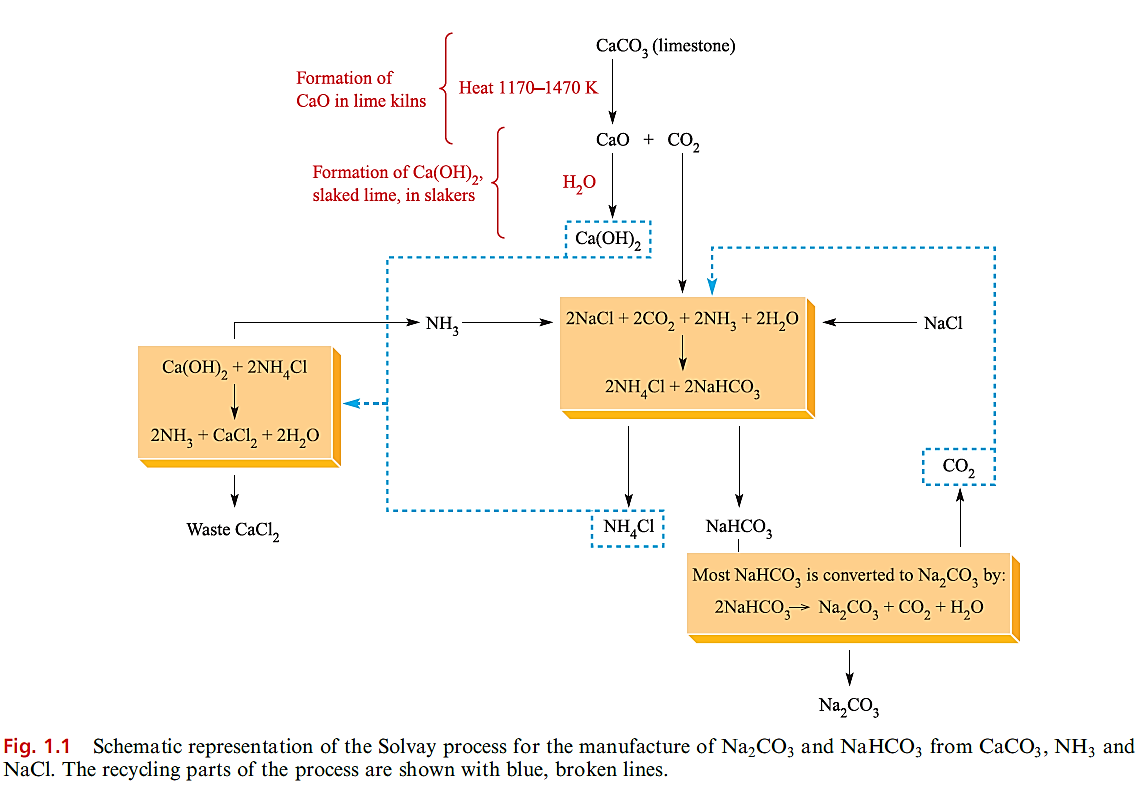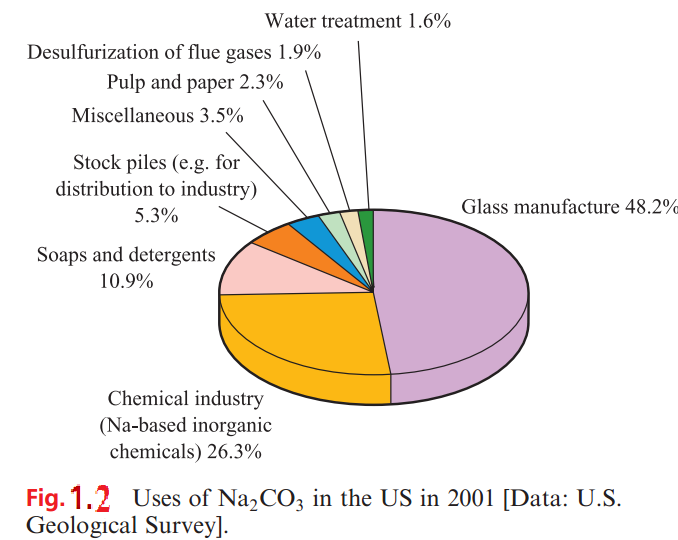
carbonates and hydrogencarbonates of group 1 metals
 المؤلف:
CATHERINE E. HOUSECROFT AND ALAN G. SHARPE
المؤلف:
CATHERINE E. HOUSECROFT AND ALAN G. SHARPE
 المصدر:
Inorganic Chemistry
المصدر:
Inorganic Chemistry
 الجزء والصفحة:
p 265
الجزء والصفحة:
p 265
 15-1-2018
15-1-2018
 1382
1382
carbonates and hydrogencarbonates of group 1 metals
The properties of alkali metal salts of most oxoacids depend on the oxoanion present and not onm the cation; thus we tend to discuss salts of oxoacids under the appropriate acid. However, we single out the carbonates and hydrogencarbonates because of their importance. Whereas Li2CO3 is sparingly soluble in water, the remaining carbonates of the group 1 metals are very soluble.
In many countries, sodium carbonate (soda ash) and sodium hydrogencarbonate (commonly called sodium bicarbonate) are manufactured by the Solvay process (Figure 1.1), but this is being superseded where natural sources of the mineral trona, Na2 CO3.NaHCO3.2H2O, are available. Figure 1.1 shows that NH3 can be recycled, but most waste CaCl2 is dumped (e.g. into the sea) or used in winter road clearance. In 2001, _35 Mt of sodium carbonate was produced worldwide, 10.3Mt in the US. The US (a net exporter of Na2CO3) consumed _6.4 Mt of sodium carbonate in 2003; uses are summarized in Figure 1.2.
Sodium hydrogencarbonate, although a direct product in the Solvay process, is also manufactured by passing CO2 through aqueous Na2CO3 or by dissolving trona in H2O saturated with CO2. Its uses include those as a foaming agent, a food additive (e.g. baking powder) and an effervescent in pharmaceutical products. The Solvay company has now developed a process for using NaHCO3 in pollution control, e.g. by neutralizing SO2 or HCl in industrial and other waste emissions.
There are some notable differences between Na and other alkali metal [CO3]2- and [HCO3]- salts. Whereas NaHCO3 can be separated in the Solvay process by precipitation, the same is not true of KHCO3. Hence, K2CO3 is produced, not via KHCO3, but by the reaction of KOH with CO2; K2CO3 has uses in the manufacture of certain glasses and ceramics. Among its applications, KHCO3 is used as a buffering agent in water treatment and wine production. Lithium carbonate is only sparingly soluble in water; ‘LiHCO3’ has not been isolated. The thermal stabilities of the group 1 metal carbonates with increase down the group as rM+ increases, lattice energy being a crucial factor. Such a trend in stability is common to all series of oxo-salts of the alkali metals.

The solid state structures of NaHCO3 and KHCO3 exhibit hydrogen bonding . In KHCO3, the anions associate in pairs whereas in NaHCO3, infinite chains are present. In each case, the hydrogen bonds are asymmetrical. Sodium silicates are also of great commercial importance:


 الاكثر قراءة في الجدول الدوري وخواص العناصر
الاكثر قراءة في الجدول الدوري وخواص العناصر
 اخر الاخبار
اخر الاخبار
اخبار العتبة العباسية المقدسة


